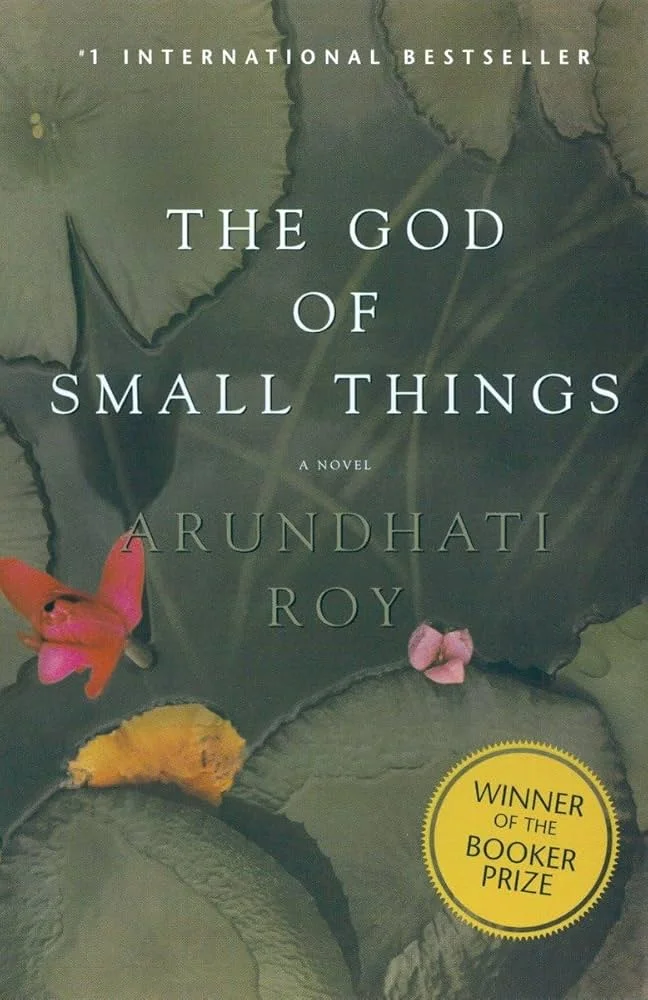Chandigarh, Sept 10: When Arundhati Roy published The God of Small Things in 1997, it arrived as both a revelation and a rupture in Indian English literature. A debut novel that went on to win the Booker Prize the same year, it stunned readers with its lyrical prose, fragmented narrative structure, and unflinching portrayal of caste, forbidden love, and childhood trauma. Nearly three decades later, it continues to be read, debated, and dissected—not merely as a story of one family in Kerala, but as an exploration of how small moments can shape lives and destinies.
At its heart, The God of Small Things tells the story of fraternal twins Estha and Rahel, born into the wealthy Syrian Christian Ipe family in Kerala. The novel is non-linear, shifting back and forth in time, revealing events not in sequence but through fragments, memories, and recurring images.
The central tragedy unfolds in 1969, when their cousin Sophie Mol, visiting from England, drowns in a river near the family’s home in Ayemenem. This death becomes the fulcrum around which the novel turns, unraveling the chain of betrayals, secrets, and societal forces that led to it.
Amma, the twins’ mother, is a central figure. Divorced from an abusive husband, she returns to her family home with her children, only to become ensnared in the rigid caste and gender expectations of her community. Ammu enters a forbidden love affair with Velutha, a lower-caste Paravan who works as a carpenter for the Ipe family. Their relationship, transgressive in every possible way, is discovered—and brutally punished.
Velutha becomes the scapegoat after Sophie Mol’s death. He is falsely accused of kidnapping the children and is beaten to death by police. Ammu is ostracized by her family and dies in obscurity a few years later. Estha and Rahel are separated, their childhood fractured. Decades later, as adults, they reunite in Ayemenem, haunted by their past, and in a controversial and deeply intimate act, seek solace in each other.
Themes and Motifs
- The Politics of Love
At its core, Roy’s novel is about the rules of love—what she famously calls “The Love Laws. The laws that lay down who should be loved. And how. And how much.” Ammu and Velutha’s love is not merely a personal affair; it is political, subversive, and ultimately punished. In exposing the cruelty of these unwritten codes, Roy critiques caste hierarchies, patriarchy, and the policing of desire.
- Caste and Social Inequality
Velutha’s fate underscores the entrenched brutality of caste in India. Despite his skills and humanity, he is reduced to his status as an “Untouchable,” a label that not only denies him dignity but seals his doom when he crosses the invisible line of intimacy with Ammu.
- Childhood and Memory
The narrative is filtered largely through the eyes of Rahel and Estha. Their perception, with its half-understood events and linguistic playfulness, shapes the novel’s unique voice. Words are broken apart, rhymes are repeated, and sounds are emphasized in a way that captures how children experience the world. Yet childhood here is no safe space; it is pierced by adult cruelty, betrayal, and trauma.
- Colonial Legacy and Cultural Identity
The presence of Sophie Mol, the half-English cousin, highlights the lingering shadows of colonialism. Her arrival is treated with exaggerated reverence by the Ipe family, reflecting their obsession with Anglophilia and their internalized sense of inferiority.
- Small Things vs. Big Things
The title itself contrasts the grand narratives of history, politics, and social structures with the intimate, everyday experiences that shape human lives. For Roy, the “small things”—a touch, a glance, a childhood game—carry as much weight as the “big things” like politics and caste.
Roy’s prose is famously experimental. She abandons linear storytelling for a mosaic of fragments, recurring phrases, and shifting timelines. Words are often capitalized or repeated in unusual rhythms, mimicking the associative, cyclical way memory works.
For example, children’s perspectives dominate much of the novel, giving the narrative a playful, sing-song quality that often clashes with the grim events it describes. This linguistic inventiveness is part of what made the novel so celebrated—and also divisive. Some critics found it overwrought or indulgent, while others hailed it as groundbreaking.
The book is also richly sensory: the lush Kerala landscape, the smell of river water, the heat, the insects, the rain, and the green-tinged light all seep into the prose. Ayemenem becomes more than a setting; it becomes a character itself.
When first published, The God of Small Things received both acclaim and controversy. Winning the Booker Prize established Roy as a major literary voice. Critics praised her fearless storytelling, lush imagery, and political critique. Others accused her of sensationalism, particularly regarding the depiction of incest between adult Rahel and Estha.
In India, the novel stirred debate over its portrayal of caste and sexuality. Some conservative voices accused Roy of obscenity, while progressives lauded her unmasking of hypocrisies embedded in family, religion, and society.
Over time, the novel has been widely studied in universities around the world, becoming a staple of postcolonial literature courses.
As a reviewer, one must acknowledge the novel’s extraordinary ambition. Roy dares to blend the personal and the political, using the intimate tragedies of one family to expose the structural violence of caste, patriarchy, and colonialism. Her prose, though at times overwhelming, achieves a musicality that is rare in contemporary fiction.
The nonlinear structure mirrors the fractured psyches of the twins, and the cyclical return to Sophie Mol’s drowning gives the narrative a haunting inevitability. Readers are not merely told a story; they are invited to inhabit the way trauma reshapes memory.
That said, the novel is not without its challenges. Some readers may find the stylistic flourishes—capitalized phrases, playful wordplay, broken syntax—distracting or excessive. The nonlinear timeline demands patience and close attention. The conclusion, with its portrayal of sibling intimacy, remains disturbing for many, raising questions about whether it is an act of healing, transgression, or both.
Yet these very provocations are what make the novel endure. It refuses easy answers, unsettling readers even as it enchants them.
Nearly three decades later, The God of Small Things continues to resonate. Its exploration of caste oppression remains tragically relevant in India. Its depiction of women’s constrained choices, the suffocating weight of tradition, and the silencing of forbidden love still feel urgent.
Roy herself turned away from fiction for twenty years, focusing instead on activism and political essays, before publishing her second novel, The Ministry of Utmost Happiness, in 2017. But The God of Small Things remains her defining work, a singular achievement that altered the landscape of Indian English literature.
The God of Small Things is not an easy read. It is lush, dense, and often devastating. But it is also luminous, tender, and unforgettable. Roy captures the contradictions of human existence—the beauty and brutality, the innocence and cruelty, the small things and the big things—with a voice that is uniquely her own.
For sensitive readers, it is a novel that may leave scars. But for those willing to immerse themselves in its fragmented rhythms, it offers a profound meditation on love, loss, and the invisible rules that govern our lives.
As Roy herself wrote, “Things can change in a day.” In the lives of Ammu, Velutha, Estha, and Rahel, they did. And in the landscape of literature, the arrival of this book did too.

